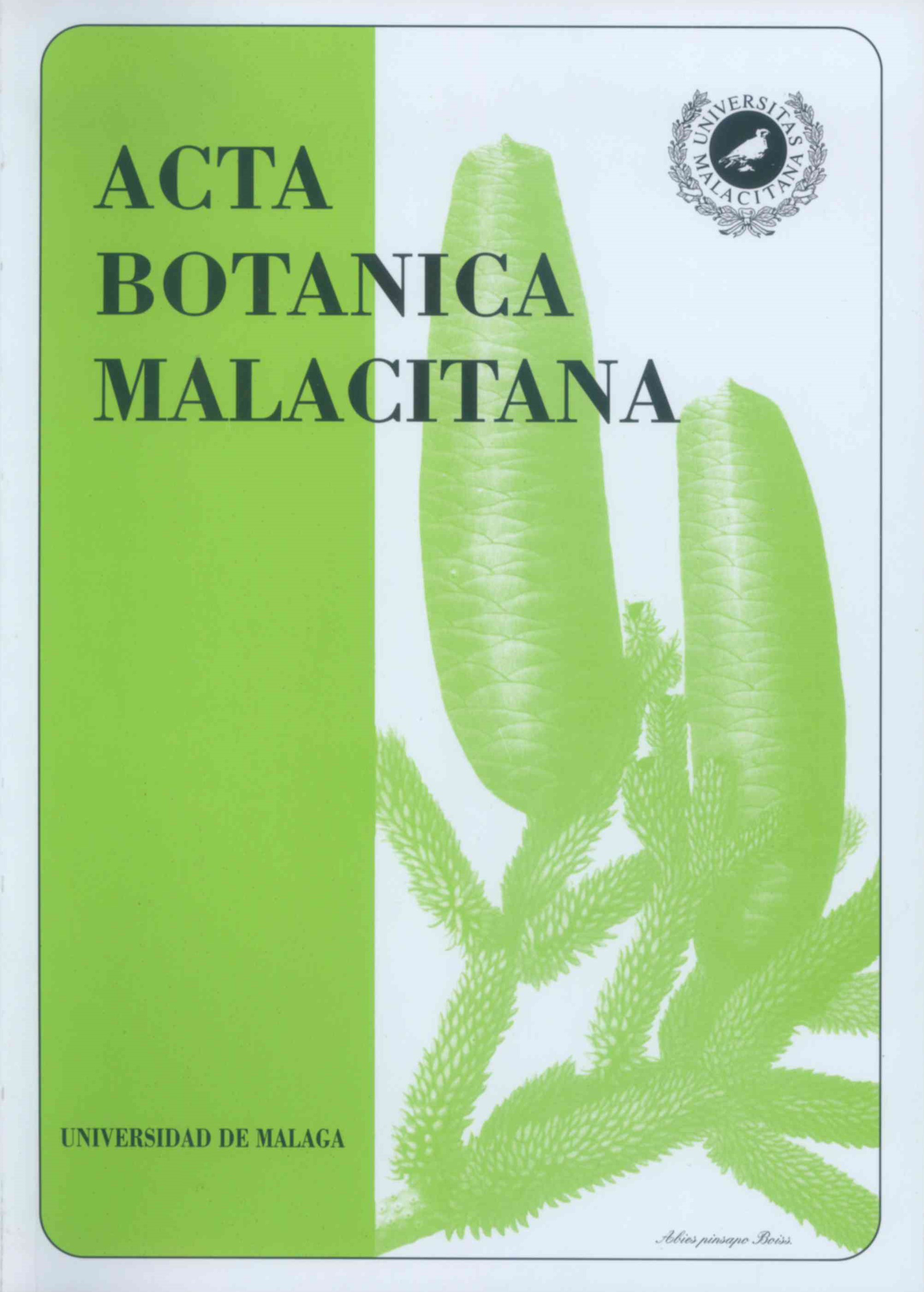Palynological characterization of sweet chestnut honeys from Galicia (NW Spain)
DOI:
https://doi.org/10.24310/abm.v22i0.8620Keywords:
Castanea, Galicia, melissopalynology, SpainAbstract
We study 83 honey samples from Galicia, with percentages higher than 70% of Castanea pollen. The 46% of the samples show percentages of this pollen between 70% and 79%, the 43% show values between 80% and 89% and the rest (11%) values higher than 89%. The mean of pollen types was 21 and the honeydew index was zero or very low for all the samples. Related to the pollen content, the samples have an average of 26.384 pollen grains per gramme of honey. Other pollen types appearing in these honey are: Rubus, Erica, Eucalyptus, Cytisu, and Campanula. This honey type is produced, principally, in Lugo and Ourense provinces. In Lugo, the center area and the eastern mountains are the main important production localities. In Ourense, the honeys come from mountaineous areas of Manzaneda, Queixa, San Mamede, the Sil valley and the limit of the province with Portugal. In Pontevedra Province, the main important production area is the Deza arca, while in A Coruña province its geographical origin is Northern. The main differences of the Galician chestnut honey with other Spanish honey of the same floral origin arc the absence of Lavandula stoechas, Cistus ladanifer, Clematis vitalba, Melilotus and the scarce of Calluna vulgaris.
Downloads
Metrics
References
BONET, A., J. RITA y M.T. SEBASTIA -1985- La flora meltfera de la circumscripció de Barcelona. Diputación de Barcelona. 107 pp.
CRANE, E., P. WALKER & R. DAY -1984- Directory of important world honey sources. International Bee Research Association. 384 PP.
CRANE, E. & P. WALKER -1985- Important honeydew sources and their honeys. Bee World 3: 105-112.
FERNÁNDEZ, J. y S. PEREIRA -1993- Inventario y di.s.tribución de los cultivares tradicionales de castaño (Castanea sativa Mill.) en Galicia. MAPA.
GÓMEZ FERRERAS, C. -1985- Estudio polínico de mieles españolas. Tesis Doctoral. Universidad Complutense de Madrid.
GÓMEZ FERRERAS, C. -1989- Contribución al análisis polínico de mieles de la provincia de Zamora. Botanica Complutensis 14: 157-165.
IGLESIAS, Ml., M.V. JATO y MI AIRA -1993- Estudio palinológico de mieles de montaña de la provincia de Ourense (NW España). Acta Bot. Malacitana 18: 119-123.
JATO MV., A. SALA-LLINARES, I. IGLESIAS & M. SUÁREZ-CERVERA -1991- Pollens of honeys from Northwestern Spain. Journal of Apicultura' Research 30 (2):69-73.
JATO, MV., M.I. IGLESIAS, J. GARCÍA, M. MARSÁ & M.C. SEIJO -1995- Caratteristiche melissopalinologiche e fisico-chimiche dei mieli di Rubus e di Castanea della provincia de Orense (N.O. Spagna). Apicoltura 10: 11-22
LOUVEAUX, J. -1968- L'analyse pollinique des miels (in Chauvin, R. Les produits de la ruche). Masson et Cie. Paris. T3:325-362.
LOUVEAUX, J. A. MAURIZIO & G. VORWOHL -1978- Methods of Melissopalynology. Bee World 59 (4):139-157.
LUIS VILLOTA DE, P. y C. GÓMEZ FERRERAS -1989- Contribución al análisis polínico de mieles de Asturias Occidental (España). Botanica Complutensis 15:163-173
MEIXIDE VILARINO, J.L. -1987- Contribución al estudio de los áridos productores dc mielgo en Galicia. Su aprovechamiento por la abeja melífera. Boletín de la A.G.A. 24:25-32.
PÉREZ DE ZABALZA MADOZ, A. -1989- Estudio palinológico de las mieles de Navarra. Tesis Doctoral. Universidad de Navarra.
RICCIARDELLI D'ALBORE, G.C. & G. VORWOHL -1979- Tipos de miel monoflora de la región del Mediterráneo verificados mediante análisis microscópicos de la miel. XXVII Cong. Internacional de Apicultura. 201-208.
SEIJO COELLO, M.C. -1994- Caracterización de la miel de Galicia a través del espectro polínico. Tesis Doctoral. Universidad de Vigo.
VALENCIA BARRERA, R. -1991- Estudio palinológico de mieles de la Provincia de León. Tesis Doctoral. Universidad de León.
VORWOHL, G. -1972- Das pollenspektrum von honigen aus den italicnischen alpen. Apidologie 3(4):309-340
Downloads
Published
How to Cite
Issue
Section
License
All information related to the licensing of published works in Acta Botanica Malacitana and copyright can be found in our Editorial Policy.







1.png)
